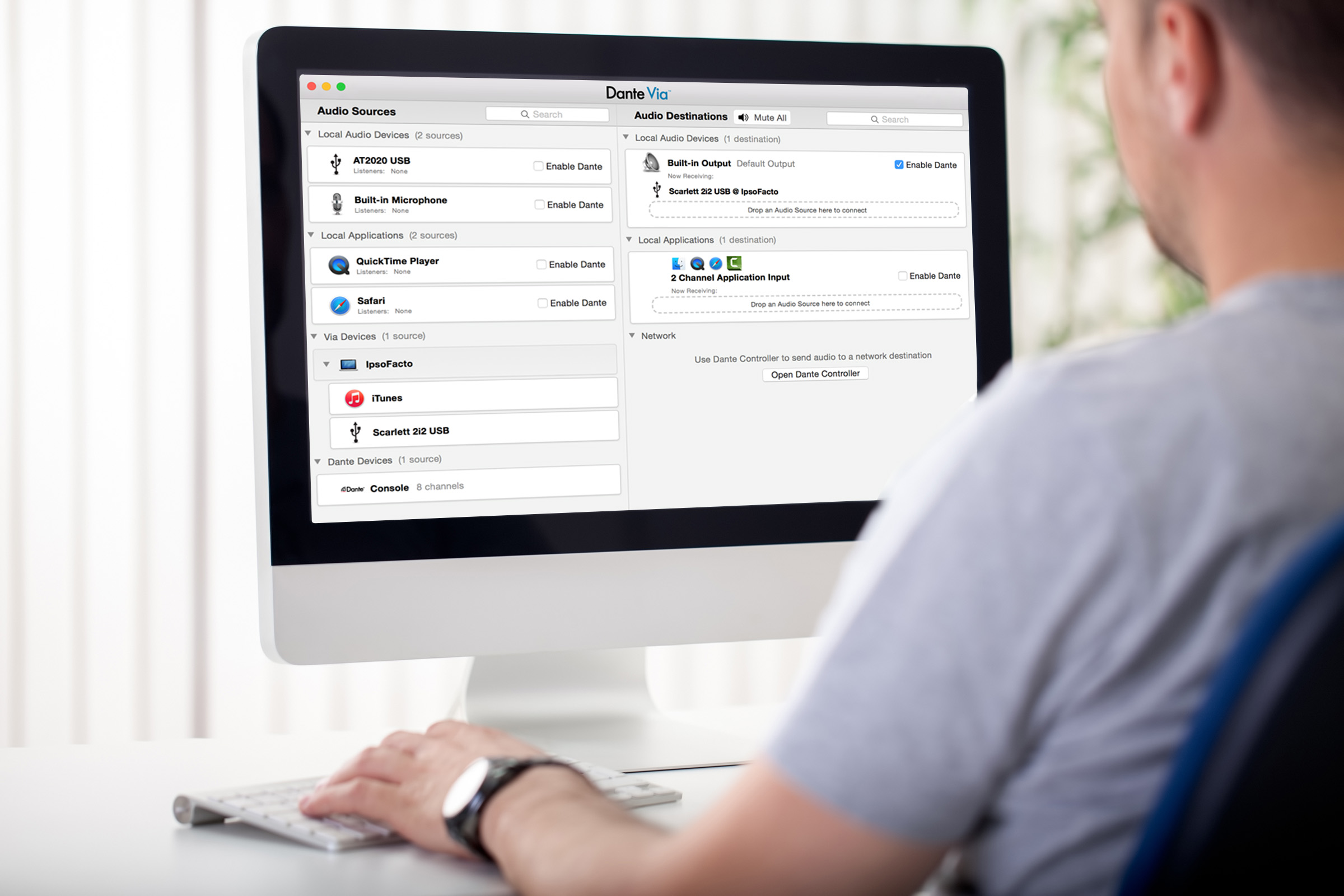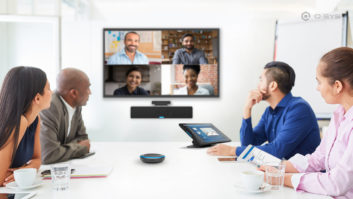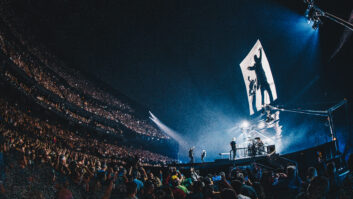
Previously, David Davies looked at recent progress made by the AES67 and AES70 audio networking standards. Here he turns his attention to Dante and Ravenna, and to the general prospects for audio networking during 2016.
With RH Consulting’s The Death of Analogue and the Rise of Audio Networking white paper highlighting the growth in particular of Dante, the Audinate media networking technology is again bound to generate its fair share of industry headlines in 2016. Set to account for a significant portion of these is Dante Via (pictured), the new software product that allows USB, FireWire or Thunderbolt devices – for example microphones, legacy mixing consoles and I/O boxes – to join any Dante audio network. The software – which was showcased throughout ISE 2016 – also enables the creation of a Dante network without the need for dedicated hardware, making it easy to route audio using only computers.
“We had a strong feeling that this product was going to help expand the ‘universe’ of Dante users, but it’s evident that this concept of a software-only network is a key factor in the interest that Via is currently enjoying,” says Audinate vice-president of marketing Joshua Rush. “I think a lot of people want to work with Dante but may not be in a position to buy dedicated enabled hardware. Via provides them with an alternative approach.”
One of the other networking technologies whose growth is underlined by the RH Consulting report, Ravenna, is also able to point to some major developments as 2016 gets underway. “New partners since IBC include 2wcom, a solutions provider specialised in DVB-S/S2 Audio/IP satellite system solutions, and Modulation Index, a US-based company that provides state-of-the-art audio-over-IP connectivity bridging between in-house programme sources and internet streaming,” says Andreas Hildebrand, senior product manager at ALC NetworX.
Meanwhile, Ravenna-related product to be introduced in recent months includes the Neumann DMI-8 digital microphone interface, the Riedel Tango platform with the TNG-200 central unit and the RSP-2318 smartpanel, the DirectOut Montone.42 MADI-to-Ravenna converter, GatesAir’s Flexivia VMexpress audio over IP distribution unit, and Lawo’s new JADE virtual sound card.
In a recent conversation, Rush observed the tendency for there to be three primary stages involved in the acceptance of any new technology. As he remarked: “The first is for people to say ‘this is revolutionary technology that could change how I work’; the second is where they become comfortable enough with the technology that they start to use it in their projects; and the third is where you see mass deployment. I think in 2015 we began to move from the second to the third stage.”
In 2016, it seems fairly certain that mass deployment will continue to accelerate. But what is also evident is that there continues to be substantial indecision among end-users about the long-term viability of individual networking technologies. With the number of available networked audio products rising all the time, there is surely an increasingly strong case for a unified, industry-wide educational effort to ensure that the main messages about networked audio are heard loud and clear – and without any ambiguity.







